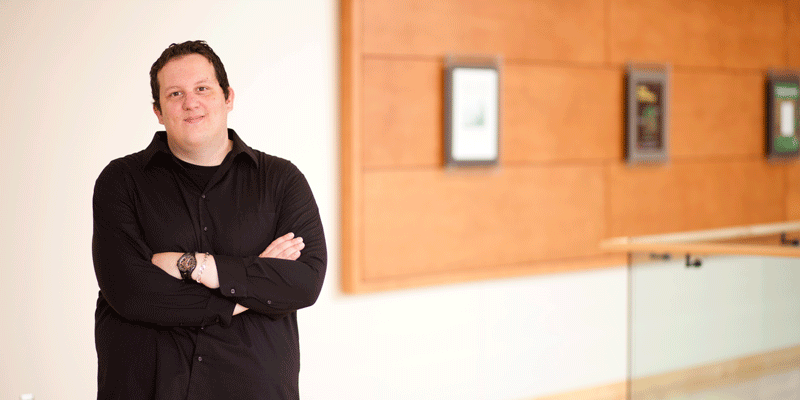NIH grant allows Mikael Elias to continue exploring microbial languages.

A recent National Institute of Health (NIH) grant for $1.9 million over 5 years will allow Mikael Elias, assistant professor of biochemistry, molecular biology and biophysics and a member of the BioTechnology Institute, to continue exploring how bacteria communicate with each other.
The grant builds on recent discoveries in the Elias lab. Bacteria rely on a shared language to group up and form communities. Taking advantage of this, the lab recently modified an enzyme to break up this communication pathway. Rather than killing off unwanted bacteria, which is how antibiotics work, the enzyme prevents bacteria from grouping up and lessens their collective impact.
What remains unclear is how the enzyme disrupts the communication pathway. They know a suite of chemical compounds regulate communication, but don’t know how exactly or what chemical compounds are involved in the process.
“We hope to understand what these different chemical molecules involved in communication mean to the bacteria at the level of individual bacteria and ultimately the entire microbiome,” says Elias.
The applications for this technology are, like microbes, far reaching — from corrosion in harbors to human health. “In some ways, we’re going after the Rosetta Stone for the microbial language,” says Elias.
—Claire Wilson